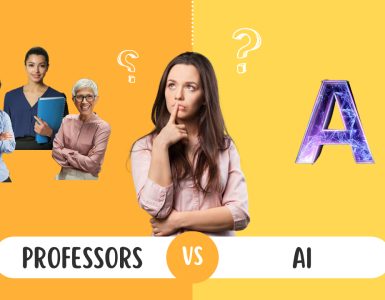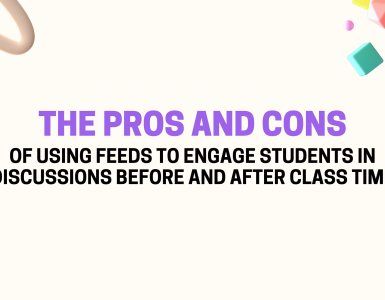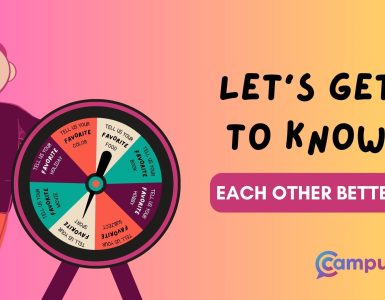Have you ever heard of educational technology (EdTech)? If you are an educator, a student, or a parent, the answer is probably a resounding yes. For those of you who aren’t familiar with the term, EdTech is formally defined as – “a study and ethical practice for facilitating learning and improving performance by creating, using, and managing appropriate technological processes and resources.”
In a nutshell, educational technology provides technological means for a more productive and streamlined learning environment in the modern world. However, with the rapid growth in technology use in education, some major problems have come to light.
One of these problems is the overselling of educational technology. Overselling is defined as “an effort to convince a customer that an extra item would enhance what they are looking to buy, or that a more expensive version might be a better option.”
The results of this have come with some severe consequences to the e-learning industry. One of these consequences, faculty resistance to adopting new technologies, has resulted from overselling technology and over-promising a “one-stop-shop” and “personalized-instruction delivery” for students.
Learning Management Systems (LMS) and other educational technologies have lost focus on education’s end goal to facilitate learning, rather than overselling expensive and underperforming technology. With so many false promises and new, complicated tech flying all over the place, can you really blame educators for being a little skeptical?
In reality, many professors have not been pushed away from technology but rather use other methods to overcome the shortcomings of the technologies available to them. There are instructors worldwide using social media to better engage with their students since it is 1. relatable, 2. easy to use, and 3. free.
Here are a few results of overselling Educational Technology:

1. Multiple technologies used at once
E-learning tools are here to stay, and they are not leaving anytime soon. In fact, they are growing rapidly. A recent study made by Online Learning Consortium released the decline in on-campus students.
Total distance enrollments account for 31% of all students in the United States. Why is this? Distance learning is a convenient way to obtain a degree while offering a quick revenue source for institutions.
Educational technology plays a huge role in distance learning, as that is the only way distance learning can occur effectively. The number one problem is that there are multiple, complicated, and underperforming technologies used at once.
Many institutions use multiple LMSs and other educational technologies simultaneously to conduct physical and distance learning classes. There is not a “centralized” platform to reach and teach students. Although there has been an increase in distance learning enrollment, individual professors’ adoption and use of LMS platforms have decreased by 20-25% in the last year.

2. Barriers to adoption
There is a false promise of “no learning curve.” Technology adoption often falls in the hands of instructional designers or educational technologists. Every time new technology is implemented, there is an opportunity for new approaches to better support faculty and students.
The biggest challenge is using the technology in full to have positive results in the classroom. Many LMSs currently being pushed to educational institutions require a lot of training before they can be used to their full potential.
[taq]Educators already spend many hours planning lessons and doing research, and any new, complicated addition is a tiresome one.[/taq]
Training time is also costly for an institution and often does not lead to much progress. Even if the training is “mandatory,” there is only so much information a person can consume within a short time frame. The rest is trial and error at the expense of time and energy that many educators simply do not have the luxury of having. This leads to burned-out educators resulting in minimal use of the technology.
The positive results for the classroom still pending. There are no clear-cut strategies to adopt these tools. The empty promise of “easy adoption” is not only false but is often very expensive, with little to show for it when all is said and done.
3. Promises, promises, and more promises
The most difficult portion of implementing technology is paying for something that is not giving you the results you desired. The number of promises of “increasing” or “enhancing learning” can be outrageous.
The majority of E-learning tools sell you features to enhance “personalization” rather than solve classroom issues. Personalization alone can be expensive since it is not merely enough to just implement new technology but rather design spaces where profound knowledge growth can occur. Technology’s expectation to solve all problems is not enough when the resources and knowledge to use the technology are not there.
In a recent article by Edweek, an educator admitted that the biggest issue with Edtech is “Many teachers lack an understanding of how educational technology works.”
The result of overselling technology as an easy-to-use, one-stop-shop (and not delivering on this promise) has raised a negative effect in educators’ minds.
Technology should be easy – something similar to social media. No one taught you how to post on your feed on Facebook or participate in a poll on Twitter. After decades of research and money invested, EdTech still has a long way to go in practicality and simplicity to be used in full in today’s classroom.





264 comments